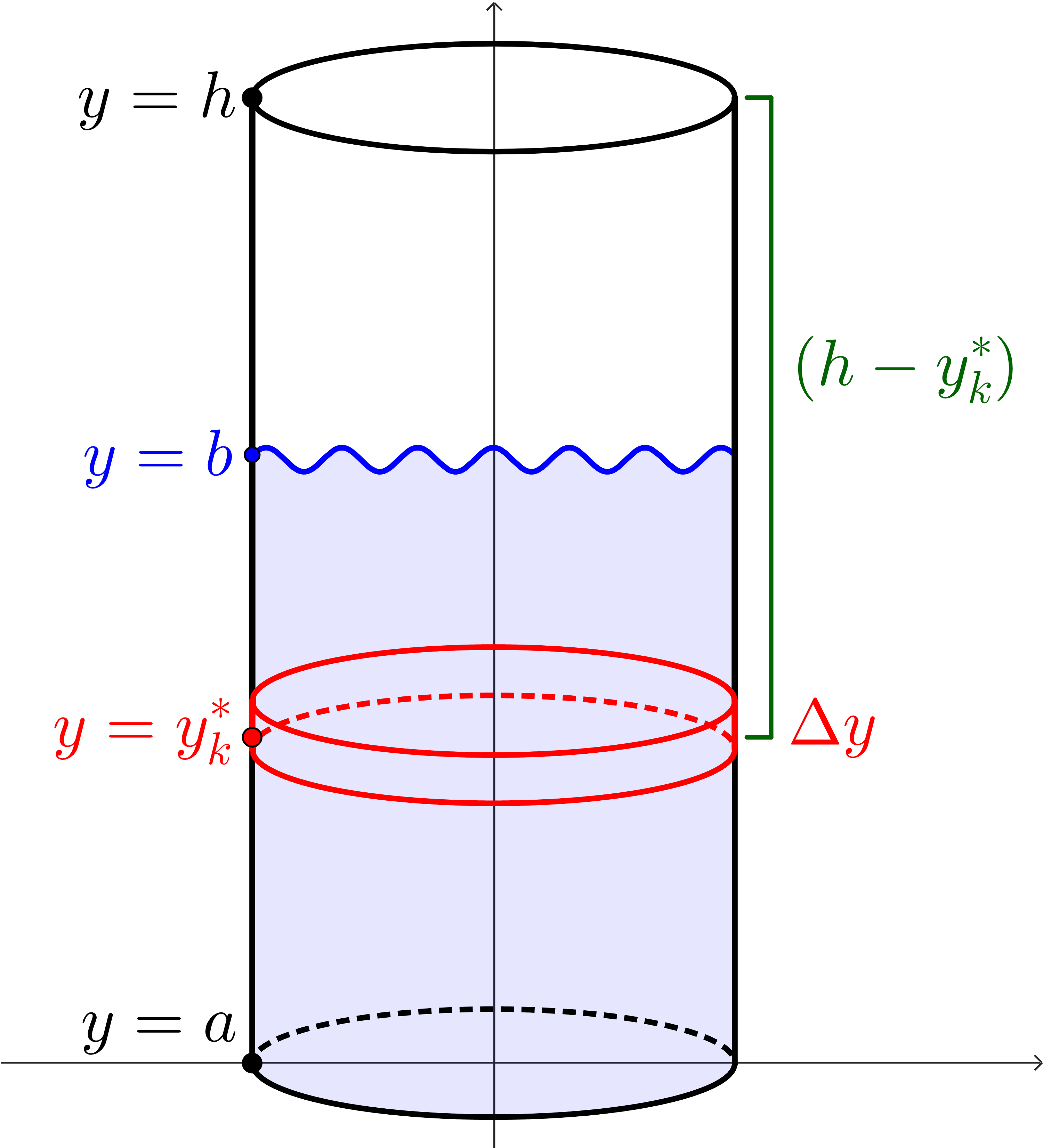Finding the cross-sectional area function will be a bit harder. It is the area of a circle, but the radius changes based on the \(y\)-value. At \(y=0\text{,}\) we have \(r=3\text{.}\) At \(y=2\text{,}\) we have \(r=0\text{.}\) So the rate of change of the radius is -1.5 meters per meter of height.
\begin{equation*}
A(y) = \pi (3-1.5y)^2
\end{equation*}
The limits of integration are from \(y=0\) to \(y=1.5\text{:}\)
\begin{align*}
W \amp = \rho g \pi \int_{y=0}^{y=1.5}(3-1.5y)^2(2-y)\;dy\\
\amp = \rho g \pi \int_{y=0}^{y=1.5}18 - 27 y + 13.5 y^2 - 2.25 y^3 \;dy\\
\amp = \rho g \pi \left(18y - \frac{27y^2}{2} + \frac{13.5y^3}{3} - \frac{2.25y^4}{4}\right)\bigg|_{y=0}^{y=1.5}\\
\amp = \frac{2295\rho g \pi}{256}
\end{align*}

